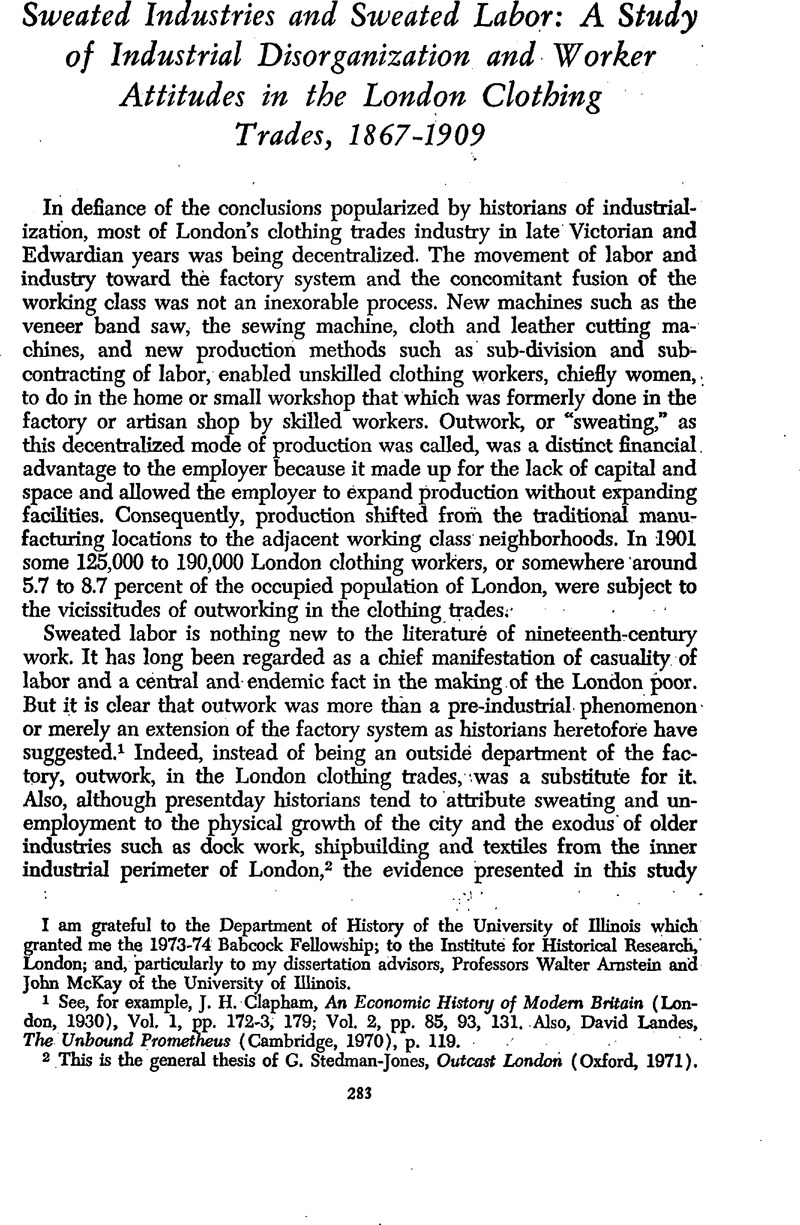Article contents
Sweated Industries and Sweated Labor: A Study of Industrial Disorganization and Worker Attitudes in the London Clothing Trades, 1867–1909
Published online by Cambridge University Press: 11 May 2010
Abstract

- Type
- Summaries of Doctoral Dissertations
- Information
- Copyright
- Copyright © The Economic History Association 1976
References
1 See, for example, Clapham, J. H., An Economic History of Modern Britain (London, 1930), Vol. 1, pp. 172–3, 179Google Scholar; Vol. 2, pp. 85, 93, 131. Also, Landes, David, The Unbound Prometheus (Cambridge, 1970), p. 119.Google Scholar
2 This is the general thesis of Stedman-Jones, G., Outcast London (Oxford, 1971).Google Scholar
3 See my article, “State Reform and the Local Economy: An Aspect of Industrialization in Late Victorian and Edwardian London,” Economic History Review, Vol. 28 (August, 1975).Google Scholar
4 Henry Pelling claims that the working class was reticent on the issue of social reform (Popular Politics in Late Victorian Society [London, 1968], ch. 1Google Scholar); see also, Meacham, Standish, “‘The Sense of an Impending Clash,’ English Working Class Unrest before the First World War,” American History Review, 5 (1972).Google Scholar
- 4
- Cited by




